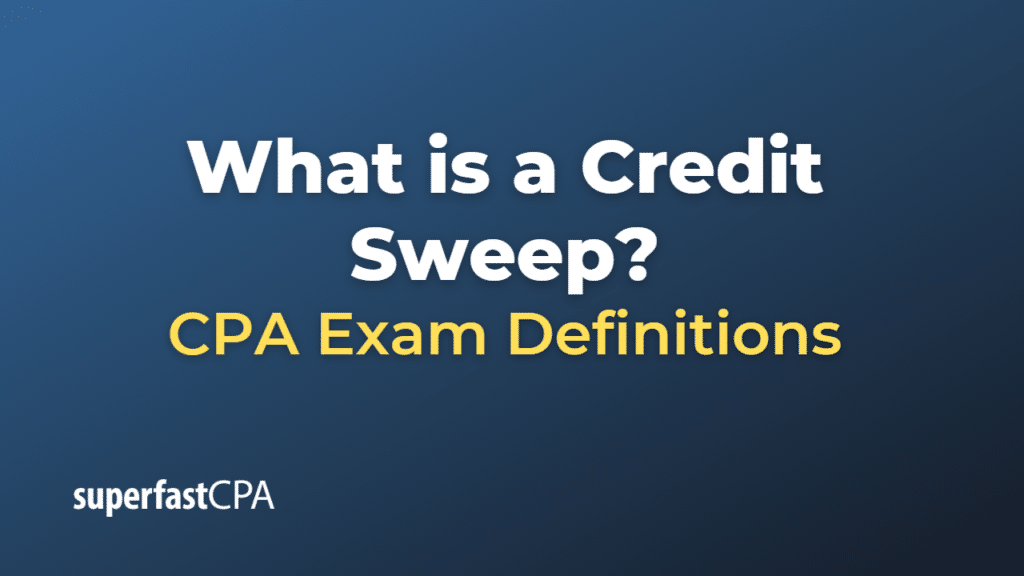Credit Sweep
A credit sweep, also known as an automatic sweep, is a type of cash management tool used by individuals and businesses to optimize the use of funds in their accounts.
Here’s how it typically works:
- The customer maintains a primary checking account where daily transactions occur (such as deposits, withdrawals, checks, and other transactions).
- The bank or financial institution sets a predetermined minimum and maximum balance for this checking account.
- At the end of each business day, any funds exceeding the maximum balance are “swept” into a higher interest-bearing account, such as a savings account or a money market fund. This allows the excess funds to earn interest.
- If the balance in the checking account drops below the minimum level, funds are “swept” back from the higher interest-bearing account to cover the deficit.
The advantage of a credit sweep arrangement is that it maximizes the interest earned on excess cash, while ensuring that sufficient funds are always available in the checking account for daily transactions. It also automates the process of moving money between accounts, which can save time and reduce the risk of errors.
Please note that terms and conditions of credit sweep services can vary between banks and financial institutions, so it’s important to understand these before setting up such a service.
Example of a Credit Sweep
Let’s consider a business, “Bella’s Bakery,” which has a credit sweep arrangement with its bank. The bank and Bella’s Bakery have agreed on a minimum balance of $10,000 and a maximum balance of $20,000 for the bakery’s checking account.
- Beginning of the day: Bella’s Bakery starts the day with a balance of $15,000 in its checking account.
- During the day: The bakery receives $10,000 in payments from customers, raising the checking account balance to $25,000.
- End of the day: Because the checking account balance exceeds the agreed-upon maximum of $20,000, the bank automatically sweeps $5,000 into a high-interest savings account.
- Next day: Bella’s Bakery writes checks for various expenses totaling $12,000, reducing the checking account balance to $8,000.
- End of the next day: Because the checking account balance is below the agreed-upon minimum of $10,000, the bank automatically sweeps $2,000 back from the savings account to the checking account.
In this example, the credit sweep arrangement ensures that Bella’s Bakery earns interest on its excess cash while maintaining sufficient funds in its checking account for daily operations. The bakery does not need to manually transfer funds between accounts, as the bank automatically handles these transfers based on the agreed-upon minimum and maximum balances.













